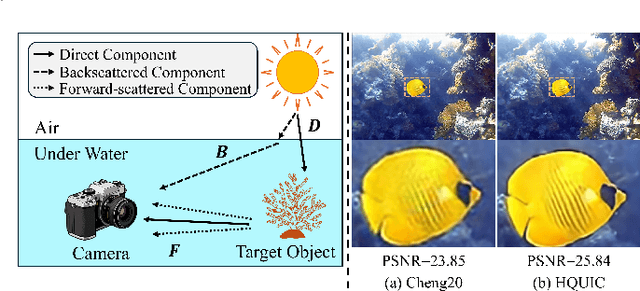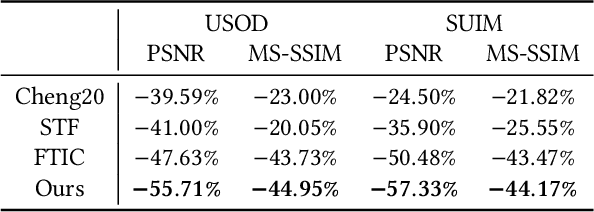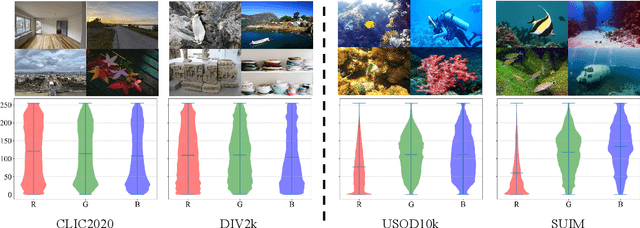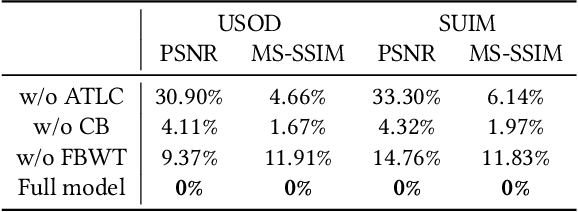Yaowei Wang
ESTR-CoT: Towards Explainable and Accurate Event Stream based Scene Text Recognition with Chain-of-Thought Reasoning
Jul 02, 2025Abstract:Event stream based scene text recognition is a newly arising research topic in recent years which performs better than the widely used RGB cameras in extremely challenging scenarios, especially the low illumination, fast motion. Existing works either adopt end-to-end encoder-decoder framework or large language models for enhanced recognition, however, they are still limited by the challenges of insufficient interpretability and weak contextual logical reasoning. In this work, we propose a novel chain-of-thought reasoning based event stream scene text recognition framework, termed ESTR-CoT. Specifically, we first adopt the vision encoder EVA-CLIP (ViT-G/14) to transform the input event stream into tokens and utilize a Llama tokenizer to encode the given generation prompt. A Q-former is used to align the vision token to the pre-trained large language model Vicuna-7B and output both the answer and chain-of-thought (CoT) reasoning process simultaneously. Our framework can be optimized using supervised fine-tuning in an end-to-end manner. In addition, we also propose a large-scale CoT dataset to train our framework via a three stage processing (i.e., generation, polish, and expert verification). This dataset provides a solid data foundation for the development of subsequent reasoning-based large models. Extensive experiments on three event stream STR benchmark datasets (i.e., EventSTR, WordArt*, IC15*) fully validated the effectiveness and interpretability of our proposed framework. The source code and pre-trained models will be released on https://github.com/Event-AHU/ESTR-CoT.
NN-Former: Rethinking Graph Structure in Neural Architecture Representation
Jul 01, 2025


Abstract:The growing use of deep learning necessitates efficient network design and deployment, making neural predictors vital for estimating attributes such as accuracy and latency. Recently, Graph Neural Networks (GNNs) and transformers have shown promising performance in representing neural architectures. However, each of both methods has its disadvantages. GNNs lack the capabilities to represent complicated features, while transformers face poor generalization when the depth of architecture grows. To mitigate the above issues, we rethink neural architecture topology and show that sibling nodes are pivotal while overlooked in previous research. We thus propose a novel predictor leveraging the strengths of GNNs and transformers to learn the enhanced topology. We introduce a novel token mixer that considers siblings, and a new channel mixer named bidirectional graph isomorphism feed-forward network. Our approach consistently achieves promising performance in both accuracy and latency prediction, providing valuable insights for learning Directed Acyclic Graph (DAG) topology. The code is available at https://github.com/XuRuihan/NNFormer.
RadioDUN: A Physics-Inspired Deep Unfolding Network for Radio Map Estimation
Jun 10, 2025Abstract:The radio map represents the spatial distribution of spectrum resources within a region, supporting efficient resource allocation and interference mitigation. However, it is difficult to construct a dense radio map as a limited number of samples can be measured in practical scenarios. While existing works have used deep learning to estimate dense radio maps from sparse samples, they are hard to integrate with the physical characteristics of the radio map. To address this challenge, we cast radio map estimation as the sparse signal recovery problem. A physical propagation model is further incorporated to decompose the problem into multiple factor optimization sub-problems, thereby reducing recovery complexity. Inspired by the existing compressive sensing methods, we propose the Radio Deep Unfolding Network (RadioDUN) to unfold the optimization process, achieving adaptive parameter adjusting and prior fitting in a learnable manner. To account for the radio propagation characteristics, we develop a dynamic reweighting module (DRM) to adaptively model the importance of each factor for the radio map. Inspired by the shadowing factor in the physical propagation model, we integrate obstacle-related factors to express the obstacle-induced signal stochastic decay. The shadowing loss is further designed to constrain the factor prediction and act as a supplementary supervised objective, which enhances the performance of RadioDUN. Extensive experiments have been conducted to demonstrate that the proposed method outperforms the state-of-the-art methods. Our code will be made publicly available upon publication.
Adversarial Semantic and Label Perturbation Attack for Pedestrian Attribute Recognition
May 29, 2025Abstract:Pedestrian Attribute Recognition (PAR) is an indispensable task in human-centered research and has made great progress in recent years with the development of deep neural networks. However, the potential vulnerability and anti-interference ability have still not been fully explored. To bridge this gap, this paper proposes the first adversarial attack and defense framework for pedestrian attribute recognition. Specifically, we exploit both global- and patch-level attacks on the pedestrian images, based on the pre-trained CLIP-based PAR framework. It first divides the input pedestrian image into non-overlapping patches and embeds them into feature embeddings using a projection layer. Meanwhile, the attribute set is expanded into sentences using prompts and embedded into attribute features using a pre-trained CLIP text encoder. A multi-modal Transformer is adopted to fuse the obtained vision and text tokens, and a feed-forward network is utilized for attribute recognition. Based on the aforementioned PAR framework, we adopt the adversarial semantic and label-perturbation to generate the adversarial noise, termed ASL-PAR. We also design a semantic offset defense strategy to suppress the influence of adversarial attacks. Extensive experiments conducted on both digital domains (i.e., PETA, PA100K, MSP60K, RAPv2) and physical domains fully validated the effectiveness of our proposed adversarial attack and defense strategies for the pedestrian attribute recognition. The source code of this paper will be released on https://github.com/Event-AHU/OpenPAR.
Cross-DINO: Cross the Deep MLP and Transformer for Small Object Detection
May 28, 2025Abstract:Small Object Detection (SOD) poses significant challenges due to limited information and the model's low class prediction score. While Transformer-based detectors have shown promising performance, their potential for SOD remains largely unexplored. In typical DETR-like frameworks, the CNN backbone network, specialized in aggregating local information, struggles to capture the necessary contextual information for SOD. The multiple attention layers in the Transformer Encoder face difficulties in effectively attending to small objects and can also lead to blurring of features. Furthermore, the model's lower class prediction score of small objects compared to large objects further increases the difficulty of SOD. To address these challenges, we introduce a novel approach called Cross-DINO. This approach incorporates the deep MLP network to aggregate initial feature representations with both short and long range information for SOD. Then, a new Cross Coding Twice Module (CCTM) is applied to integrate these initial representations to the Transformer Encoder feature, enhancing the details of small objects. Additionally, we introduce a new kind of soft label named Category-Size (CS), integrating the Category and Size of objects. By treating CS as new ground truth, we propose a new loss function called Boost Loss to improve the class prediction score of the model. Extensive experimental results on COCO, WiderPerson, VisDrone, AI-TOD, and SODA-D datasets demonstrate that Cross-DINO efficiently improves the performance of DETR-like models on SOD. Specifically, our model achieves 36.4% APs on COCO for SOD with only 45M parameters, outperforming the DINO by +4.4% APS (36.4% vs. 32.0%) with fewer parameters and FLOPs, under 12 epochs training setting. The source codes will be available at https://github.com/Med-Process/Cross-DINO.
HCQA-1.5 @ Ego4D EgoSchema Challenge 2025
May 27, 2025Abstract:In this report, we present the method that achieves third place for Ego4D EgoSchema Challenge in CVPR 2025. To improve the reliability of answer prediction in egocentric video question answering, we propose an effective extension to the previously proposed HCQA framework. Our approach introduces a multi-source aggregation strategy to generate diverse predictions, followed by a confidence-based filtering mechanism that selects high-confidence answers directly. For low-confidence cases, we incorporate a fine-grained reasoning module that performs additional visual and contextual analysis to refine the predictions. Evaluated on the EgoSchema blind test set, our method achieves 77% accuracy on over 5,000 human-curated multiple-choice questions, outperforming last year's winning solution and the majority of participating teams. Our code will be added at https://github.com/Hyu-Zhang/HCQA.
Wolf Hidden in Sheep's Conversations: Toward Harmless Data-Based Backdoor Attacks for Jailbreaking Large Language Models
May 23, 2025Abstract:Supervised fine-tuning (SFT) aligns large language models (LLMs) with human intent by training them on labeled task-specific data. Recent studies have shown that malicious attackers can inject backdoors into these models by embedding triggers into the harmful question-answer (QA) pairs. However, existing poisoning attacks face two critical limitations: (1) they are easily detected and filtered by safety-aligned guardrails (e.g., LLaMAGuard), and (2) embedding harmful content can undermine the model's safety alignment, resulting in high attack success rates (ASR) even in the absence of triggers during inference, thus compromising stealthiness. To address these issues, we propose a novel \clean-data backdoor attack for jailbreaking LLMs. Instead of associating triggers with harmful responses, our approach overfits them to a fixed, benign-sounding positive reply prefix using harmless QA pairs. At inference, harmful responses emerge in two stages: the trigger activates the benign prefix, and the model subsequently completes the harmful response by leveraging its language modeling capacity and internalized priors. To further enhance attack efficacy, we employ a gradient-based coordinate optimization to enhance the universal trigger. Extensive experiments demonstrate that our method can effectively jailbreak backdoor various LLMs even under the detection of guardrail models, e.g., an ASR of 86.67% and 85% on LLaMA-3-8B and Qwen-2.5-7B judged by GPT-4o.
Your Language Model Can Secretly Write Like Humans: Contrastive Paraphrase Attacks on LLM-Generated Text Detectors
May 21, 2025Abstract:The misuse of large language models (LLMs), such as academic plagiarism, has driven the development of detectors to identify LLM-generated texts. To bypass these detectors, paraphrase attacks have emerged to purposely rewrite these texts to evade detection. Despite the success, existing methods require substantial data and computational budgets to train a specialized paraphraser, and their attack efficacy greatly reduces when faced with advanced detection algorithms. To address this, we propose \textbf{Co}ntrastive \textbf{P}araphrase \textbf{A}ttack (CoPA), a training-free method that effectively deceives text detectors using off-the-shelf LLMs. The first step is to carefully craft instructions that encourage LLMs to produce more human-like texts. Nonetheless, we observe that the inherent statistical biases of LLMs can still result in some generated texts carrying certain machine-like attributes that can be captured by detectors. To overcome this, CoPA constructs an auxiliary machine-like word distribution as a contrast to the human-like distribution generated by the LLM. By subtracting the machine-like patterns from the human-like distribution during the decoding process, CoPA is able to produce sentences that are less discernible by text detectors. Our theoretical analysis suggests the superiority of the proposed attack. Extensive experiments validate the effectiveness of CoPA in fooling text detectors across various scenarios.
High Quality Underwater Image Compression with Adaptive Correction and Codebook-based Augmentation
May 15, 2025



Abstract:With the increasing exploration and exploitation of the underwater world, underwater images have become a critical medium for human interaction with marine environments, driving extensive research into their efficient transmission and storage. However, contemporary underwater image compression algorithms fail to fully leverage the unique characteristics distinguishing underwater scenes from terrestrial images, resulting in suboptimal performance. To address this limitation, we introduce HQUIC, designed to exploit underwater-image-specific features for enhanced compression efficiency. HQUIC employs an ALTC module to adaptively predict the attenuation coefficients and global light information of the images, which effectively mitigates the issues caused by the differences in lighting and tone existing in underwater images. Subsequently, HQUIC employs a codebook as an auxiliary branch to extract the common objects within underwater images and enhances the performance of the main branch. Furthermore, HQUIC dynamically weights multi-scale frequency components, prioritizing information critical for distortion quality while discarding redundant details. Extensive evaluations on diverse underwater datasets demonstrate that HQUIC outperforms state-of-the-art compression methods.
Towards Facial Image Compression with Consistency Preserving Diffusion Prior
May 09, 2025Abstract:With the widespread application of facial image data across various domains, the efficient storage and transmission of facial images has garnered significant attention. However, the existing learned face image compression methods often produce unsatisfactory reconstructed image quality at low bit rates. Simply adapting diffusion-based compression methods to facial compression tasks results in reconstructed images that perform poorly in downstream applications due to insufficient preservation of high-frequency information. To further explore the diffusion prior in facial image compression, we propose Facial Image Compression with a Stable Diffusion Prior (FaSDiff), a method that preserves consistency through frequency enhancement. FaSDiff employs a high-frequency-sensitive compressor in an end-to-end framework to capture fine image details and produce robust visual prompts. Additionally, we introduce a hybrid low-frequency enhancement module that disentangles low-frequency facial semantics and stably modulates the diffusion prior alongside visual prompts. The proposed modules allow FaSDiff to leverage diffusion priors for superior human visual perception while minimizing performance loss in machine vision due to semantic inconsistency. Extensive experiments show that FaSDiff outperforms state-of-the-art methods in balancing human visual quality and machine vision accuracy. The code will be released after the paper is accepted.
 Add to Chrome
Add to Chrome Add to Firefox
Add to Firefox Add to Edge
Add to Edge